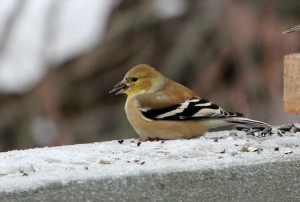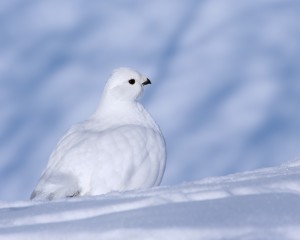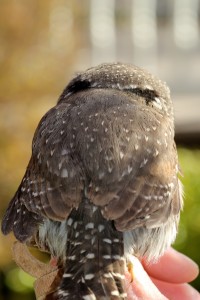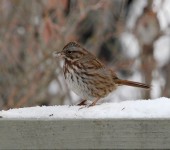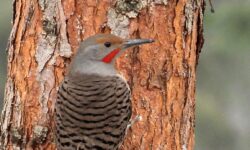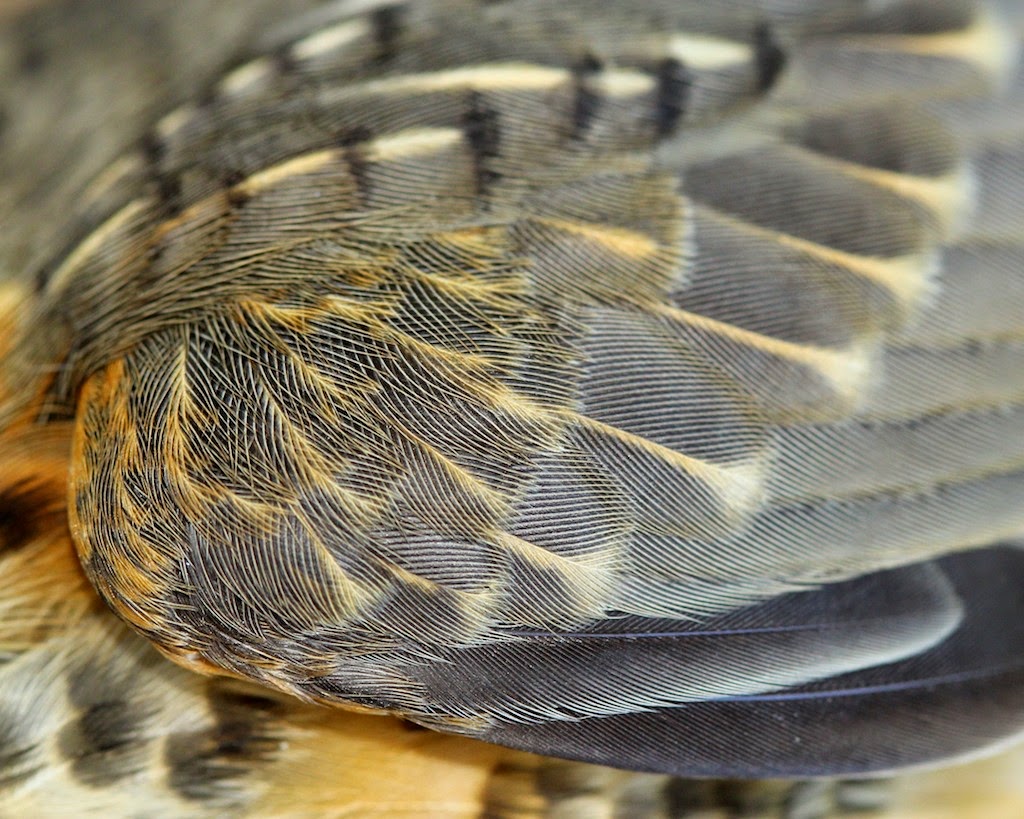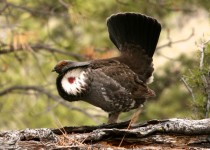American goldfinches dart to and from the bird feeder in their drab yellow plumage this time of year. Their vivid yellow plumage won’t come until they are ready to start breeding.
The change from drab to bright plumage is a yearly occurrence for many birds, especially males. The colors and markings on a male bird often determine its attractiveness to females and ultimately its mating success. But males don’t need to stay in their colorful plumage year-round, so they molt.
All birds molt because feathers don’t last forever. The wear and tear on feathers can be quite extreme in harsh environments such as wetlands with cattails where marsh wrens and bobolinks reside.
Some birds molt once a year, others twice a year, shedding their feathers wherever they happen to fall off.
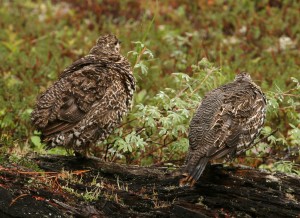
The tail feathers lost by the grouse on the left (most likely by a predator) won’t be replaced until the next molt
Birds that molt once a year replace all their feathers and keep the same plumage coloration (plumage refers to all of a bird’s feathers) and includes birds such as chickadees, hawks, hummingbirds, jays, owls, woodpeckers and swallows.
Other birds (including warblers, tanagers and buntings) undergo one complete molt and then a pre-nuptial partial molt that results in a breeding (alternate) plumage. The complete molt occurs sometime after the breeding season and the bird returns to its basic, less-colorful plumage.
Birds that live in environments that cause significant wear and tear on feathers undergo two complete molts a year. Some birds molt into an alternate plumage while others retain their basic plumage coloration.
Some birds molt twice a year for camouflage reasons. Ptarmigan molt from their mottled brown summer plumage to an entirely white plumage to match the snow in winter–much like snowshoe hares. Come spring they molt back into the mottled brown plumage to stay hidden amongst the brush.
Before winter begins, birds in northern regions often grow additional feathers (up to 50 percent more) to help stay warm, just as some mammals grow additional hair for their winter coat. Once the weather warms, they loose those extra feathers.
When a bird molts it doesn’t lose all of its feathers at once. That would result in being extremely vulnerable to predators. Instead most birds molt a few feathers at a time. A songbird completes a molt over the course of five to twelve weeks.
However, most male ducks replace all their flight feathers at once after breeding season has ended. This results in them being flightless for two to four weeks.
As a feather grows, the opening at the tip of the calamus (base of the feather) allows blood to enter the feather. Once the feather is done growing, the opening is sealed off and the feather becomes a dead structure (like our hair and fingernails).
Just like we have to care for our hair and fingernails, birds have to care for their feathers to help them last until the next molt.
Birds groom their feathers by preening. They use their beaks and feet to clean and arrange their feathers, often contorting themselves into odd positions to reach every feather.
As they preen, they remove dust, dirt and parasites from the feathers. They also arrange the feather into the optimal position.
To keep the feathers flexible and waterproof, most birds spread an oil on each feather when preening. The oil comes from the preen gland at the base of the tail.
Some birds lack a preen gland and instead have specialized feathers that disintegrate into a powder. The powder functions the same as preen oil but doesn’t provide the strong waterproofing of the oil. Birds that are less likely to immerse themselves in water or bathe in water (such as owls, pigeons and hawks) have these specialized feathers.
Next time you see a bird bathing in water or dust, they are in the process of preening to ensure their feathers stay in the best possible shape until the next molt.

